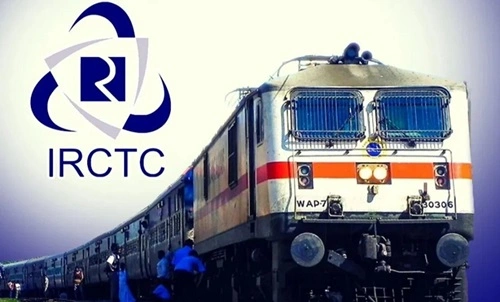The Indian Railway Catering and Tourism Corporation (IRCTC), a government-owned enterprise under the Ministry of Railways, plays a crucial role in facilitating train travel and tourism in India. Established in 1999, IRCTC has grown into a multifaceted organization, providing services like online ticketing, catering, packaged drinking water, and tourism packages. Known as the backbone of India’s railway e-commerce ecosystem, IRCTC has evolved into a profit-generating entity with a highly diversified business model. This article explores how IRCTC operates and generates revenue across its various verticals.
Overview of IRCTC’s Business Model

IRCTC operates on a multi-revenue stream model, encompassing four primary segments:
- Online Ticketing: Managing e-ticket bookings for Indian Railways.
- Catering Services: Providing onboard catering and food services at railway stations.
- Packaged Drinking Water: Manufacturing and selling “Rail Neer.”
- Tourism and Travel Packages: Offering customized tourism packages, train charters, and air ticketing services.
This diverse business model allows IRCTC to generate income from multiple sources while leveraging its monopoly in specific areas like online train ticketing and packaged water sales.
Revenue Streams
a) Online Ticketing
Online ticketing is IRCTC’s most prominent revenue generator, accounting for a significant portion of its income. As the exclusive entity authorized to handle online train ticket bookings for Indian Railways, IRCTC provides its services through:
- Website and Mobile App: The IRCTC platform handles millions of daily transactions.
- Convenience Fees: IRCTC charges passengers a nominal fee for booking tickets online.
- The current fee structure is ₹15 per non-AC ticket and ₹30 per AC ticket (excluding GST).
- These fees generate substantial revenue, given the high volume of daily transactions.
- Advertising and Promotions: The platform earns additional revenue by hosting advertisements on its website and app.
b) Catering Services
IRCTC provides catering services onboard trains and at railway stations across India. The two main channels include:
- Onboard Catering: Managing food and beverage services for premium trains like Rajdhani, Shatabdi, Vande Bharat, and other mail/express trains. Passengers can pre-order meals or purchase them during their journey.
- Station Food Stalls: Operating food kiosks, food plazas, and quick-service outlets at railway stations.
How It Earns Money:
- Direct sales of food and beverages to passengers.
- Licensing fees from third-party caterers and franchises operating under the IRCTC brand.
c) Packaged Drinking Water (Rail Neer)
IRCTC’s “Rail Neer” brand of packaged drinking water is supplied across trains and railway stations. IRCTC owns multiple Rail Neer plants to meet the demand.
Revenue Sources:
- Sales to passengers through onboard services and station outlets.
- Wholesale supply agreements with catering service providers.
d) Tourism and Travel Packages
IRCTC has diversified into tourism services, offering:
- Bharat Gaurav Trains: Special trains for religious and heritage tourism.
- Package Tours: Customizable tours, including accommodations, meals, and sightseeing.
- Air Ticketing Services: Booking domestic and international flights.
- Luxury Train Services: Operating luxury trains like the Maharajas’ Express, catering to affluent travelers.
Revenue Sources:
- Tour package fees, including service charges and markups.
- Commissions from airline bookings.
- Charter fees for special-purpose trains.
e) Advertisement and Data Monetization
IRCTC monetizes its vast user base through:
- Digital Advertising: Displaying ads on its website, app, and email notifications.
- Email Campaigns: Promoting travel-related services to registered users.
- Co-branded Offers: Partnerships with banks and payment providers to offer discounts and cashback on ticket bookings.
f) Affiliate and Partnership Programs
IRCTC collaborates with third-party platforms for affiliate marketing and promotions. This includes:
- Partnering with payment gateways for transaction fees.
- Offering co-branded credit and debit cards with banks.
g) Executive Lounges and Retiring Rooms
IRCTC operates executive lounges and retiring rooms at major railway stations, providing premium facilities like comfortable seating, Wi-Fi, and refreshments for passengers.
Revenue Sources:
- User fees for lounge access.
- Room booking charges for short-term stays.
Key Cost Drivers
IRCTC’s operations involve several cost components:
- IT Infrastructure: Managing its online platform and mobile app requires significant investments in technology, server maintenance, and cybersecurity.
- Logistics and Operations: Costs associated with food preparation, delivery, and maintaining Rail Neer plants.
- Staff Salaries: Operating catering services, lounges, and tourism packages requires a large workforce.
- Marketing and Promotions: Expenses for promoting tourism packages and enhancing brand visibility.
- Regulatory Compliance: Adhering to government guidelines and railway contracts.
Strategies for Revenue Growth
IRCTC employs several strategies to sustain and grow its revenue:
a) Digital Transformation
The company continues to enhance its online ticketing platform, integrating AI and predictive analytics for personalized recommendations. IRCTC is also exploring blockchain and data analytics to improve operational efficiency.
b) Expansion of Rail Neer Plants
To meet the rising demand for packaged drinking water, IRCTC plans to establish more Rail Neer plants across India, increasing production capacity and expanding its distribution network.
c) Focus on Tourism
IRCTC is actively promoting religious tourism through Bharat Gaurav Trains and other pilgrimage packages. It is also targeting international travelers with luxury train experiences.
d) Premium Services
Expanding executive lounges and retiring rooms at railway stations to cater to high-income travelers.
e) Diversification
Venturing into air ticketing and hospitality services provides IRCTC with additional revenue streams and reduces its dependence on railway operations.
Challenges and Opportunities
Challenges
- Government Regulation: Being a public sector enterprise, IRCTC’s pricing and operations are subject to government oversight.
- Competition: Private players entering the catering, tourism, and online ticketing sectors could pose a threat.
- Operational Complexity: Managing large-scale operations across multiple verticals is challenging.
Opportunities
- E-commerce Boom: Rising internet penetration offers immense growth potential for IRCTC’s online services.
- Tourism Growth: The demand for religious and heritage tourism in India is on the rise.
- Untapped Markets: Expanding Rail Neer’s presence to non-railway markets like retail stores and airports.
Financial Overview
As of the latest reports, IRCTC has consistently demonstrated profitability, with strong revenue growth driven by online ticketing and catering services. The company’s monopolistic position in key areas ensures a steady cash flow, while its diversification efforts are paving the way for future growth.
Conclusion
IRCTC’s business model is a perfect example of leveraging a government-backed monopoly to build a diversified and profitable enterprise. With its focus on digital transformation, sustainable operations, and customer-centric services, IRCTC is well-positioned to maintain its leadership in the railway and tourism sectors. By capitalizing on emerging opportunities in e-commerce and tourism, IRCTC continues to strengthen its financial performance and expand its footprint across India

